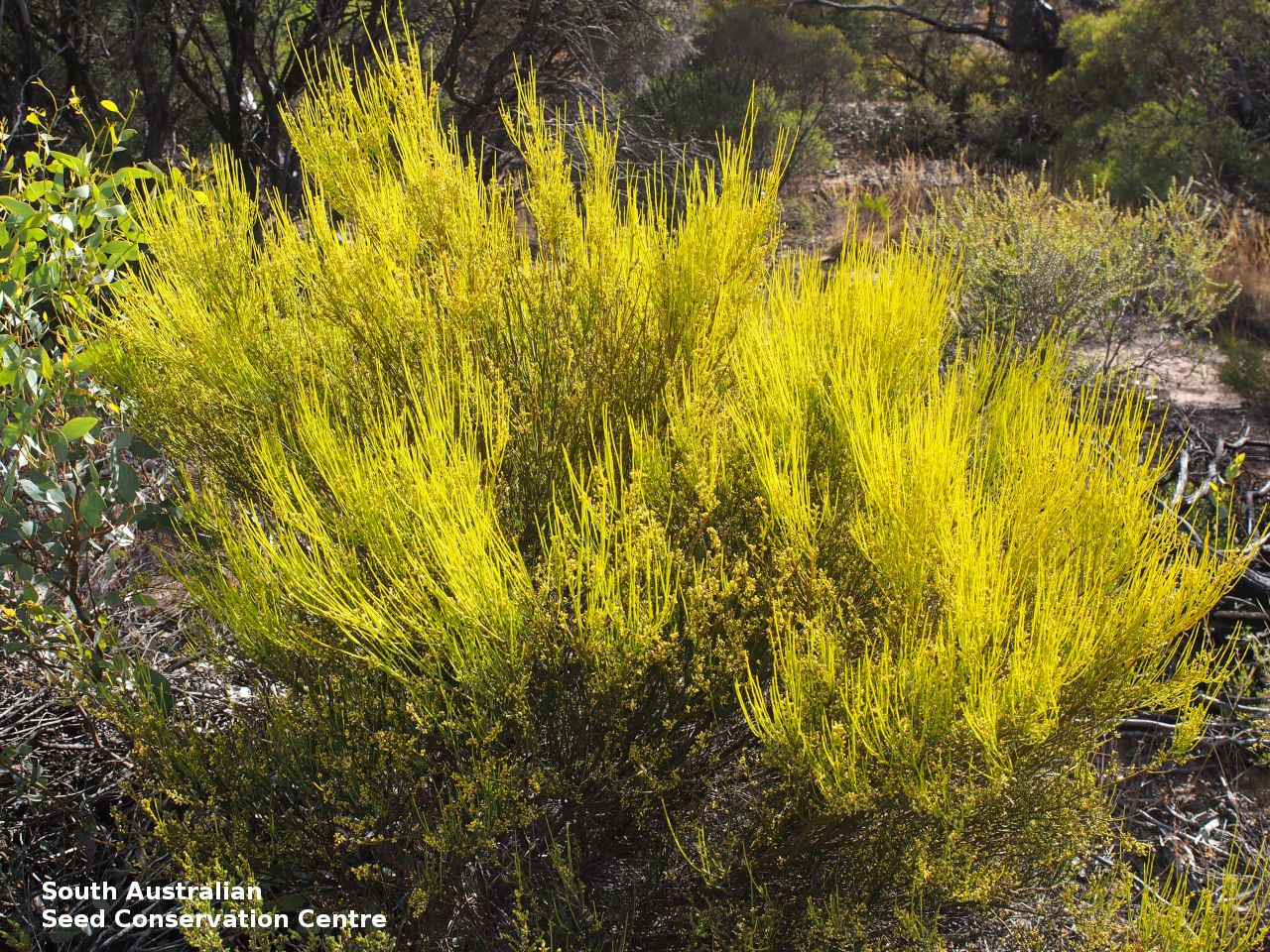
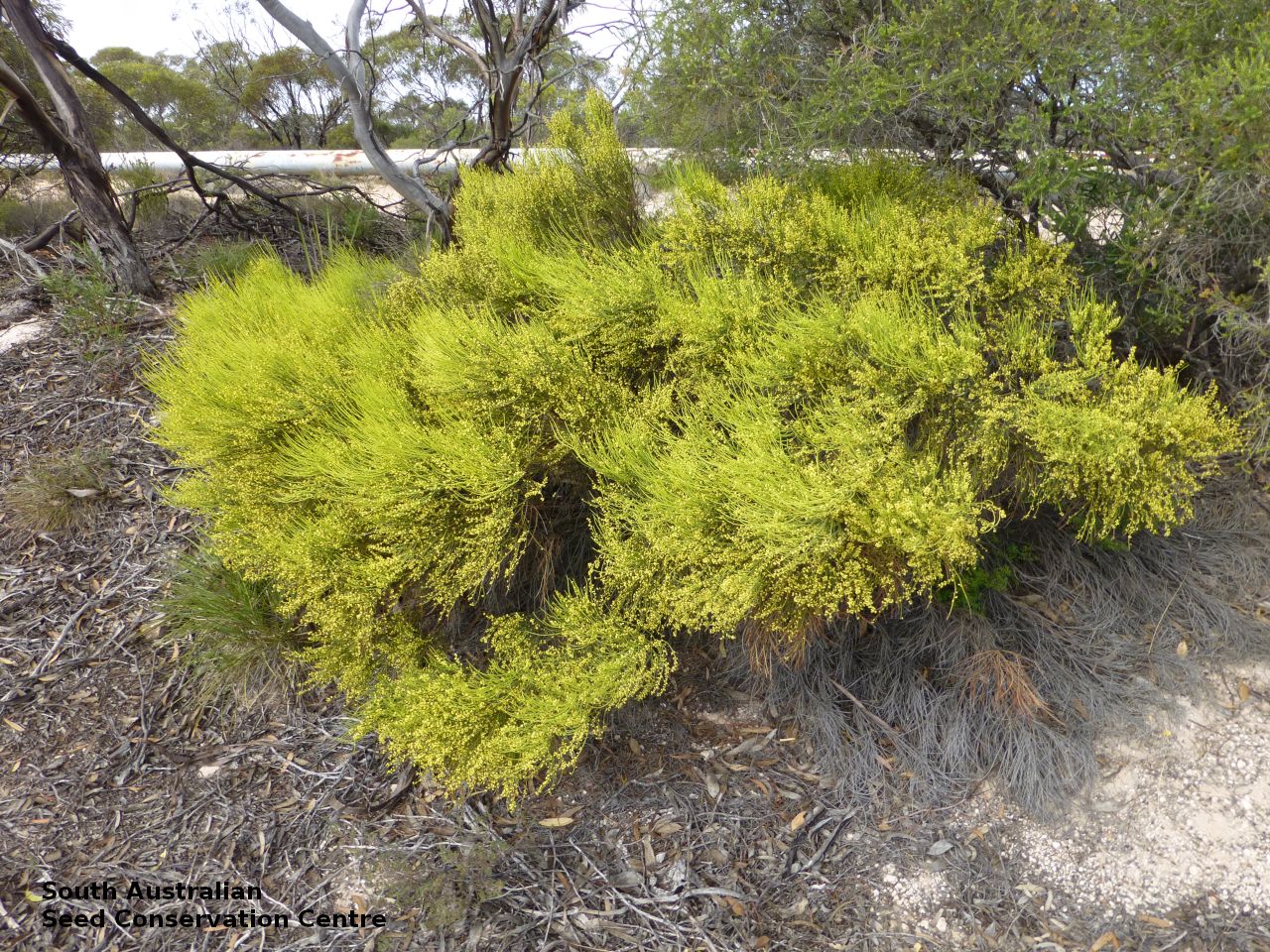
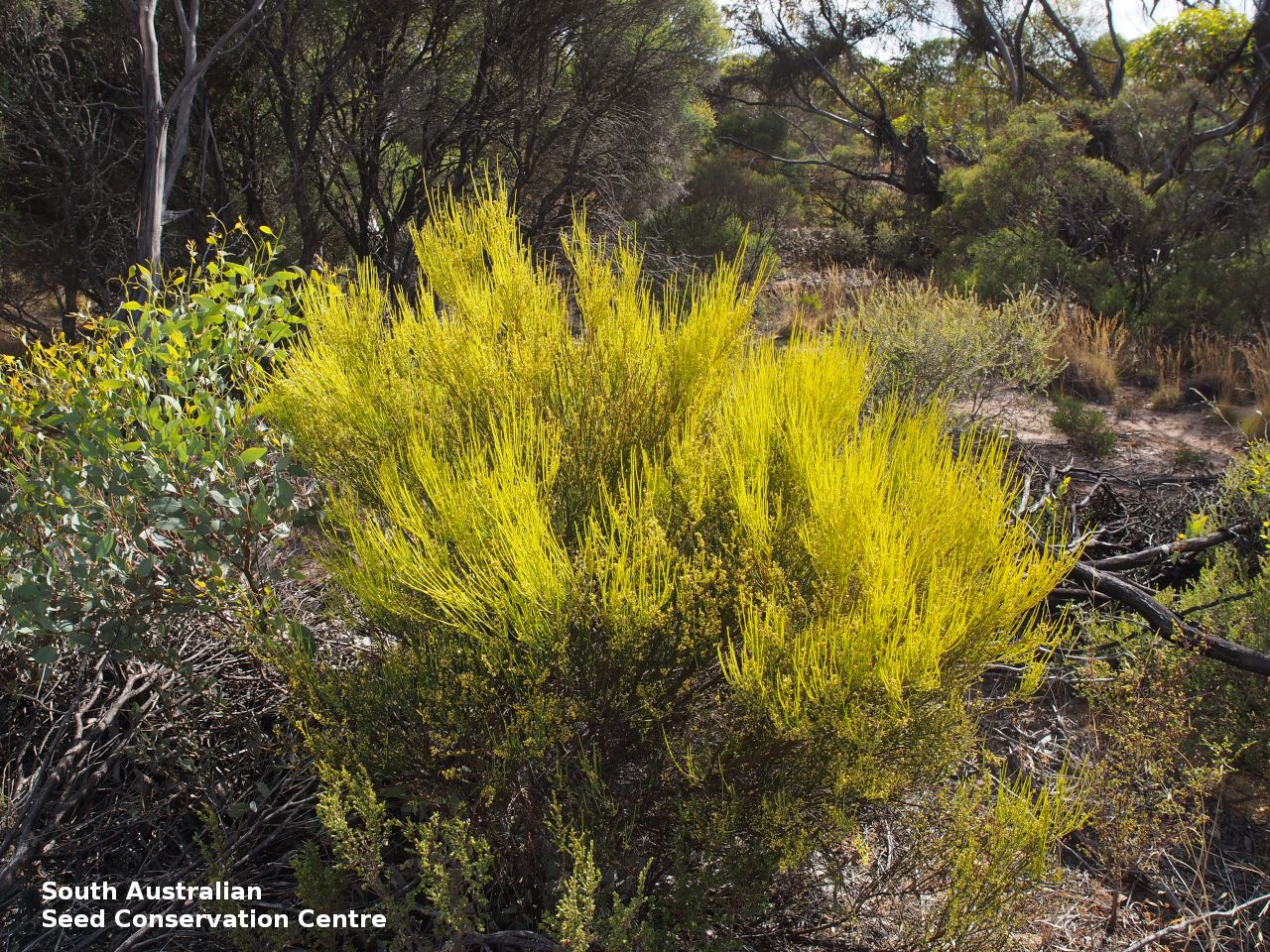
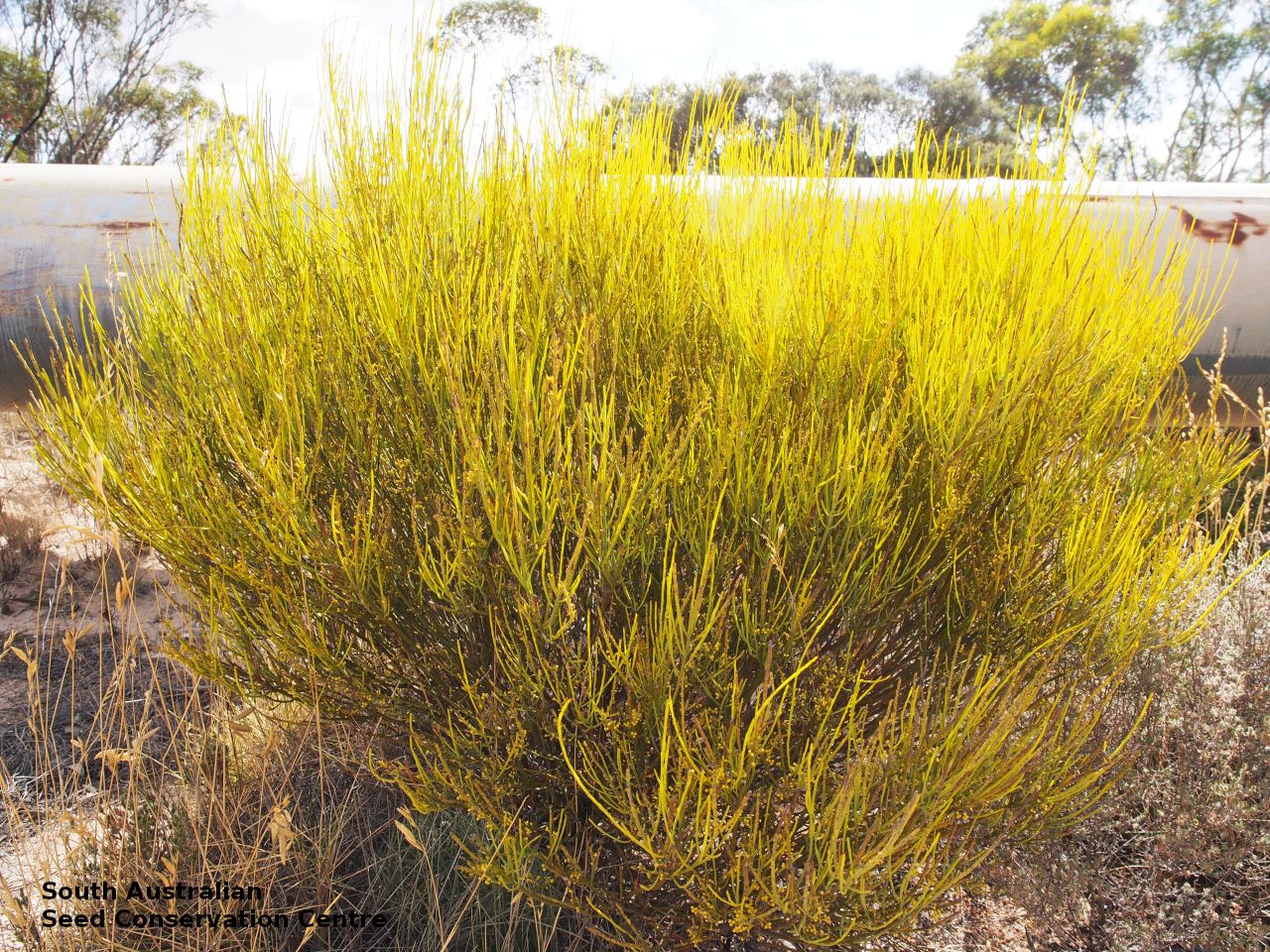
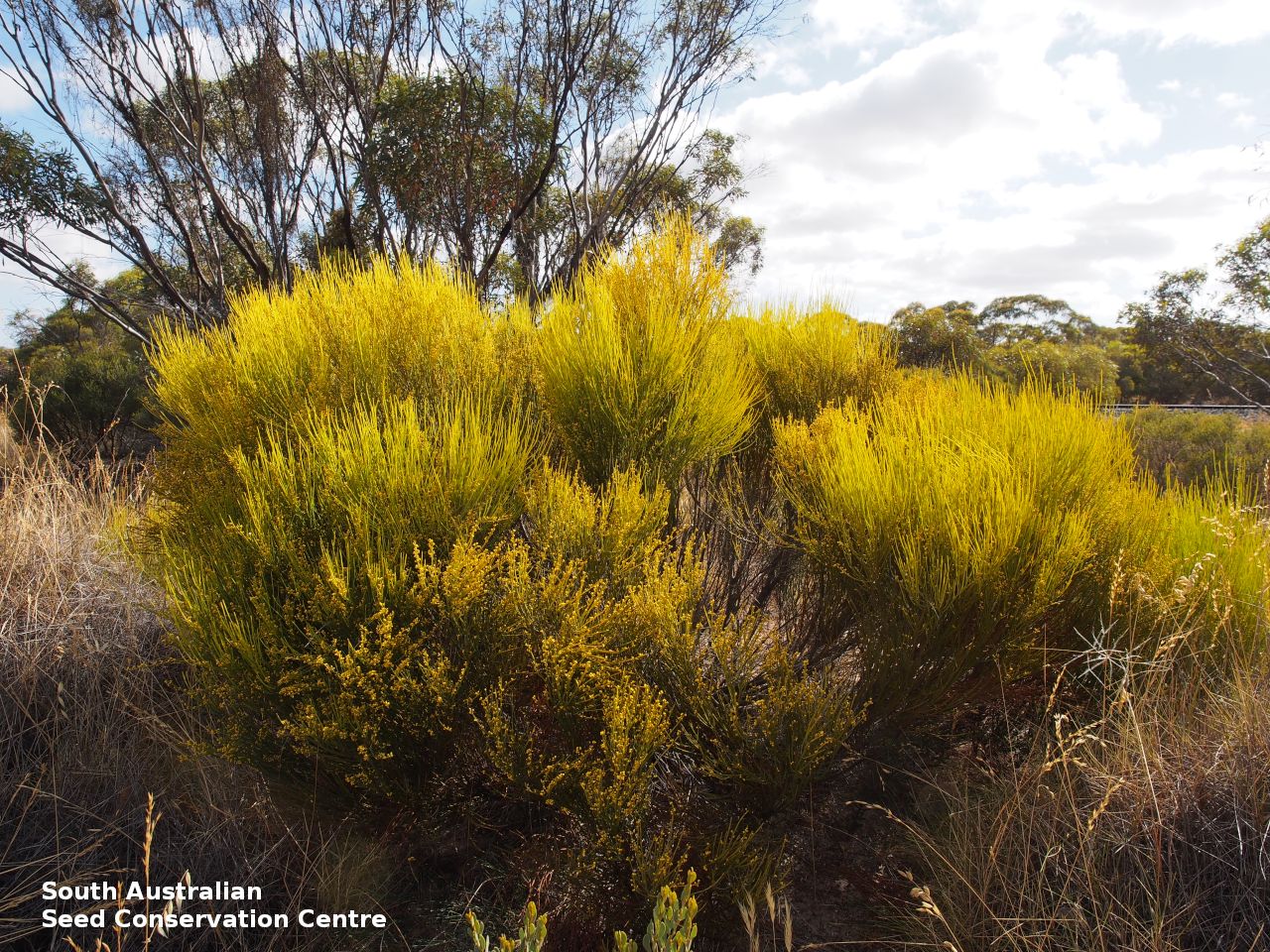
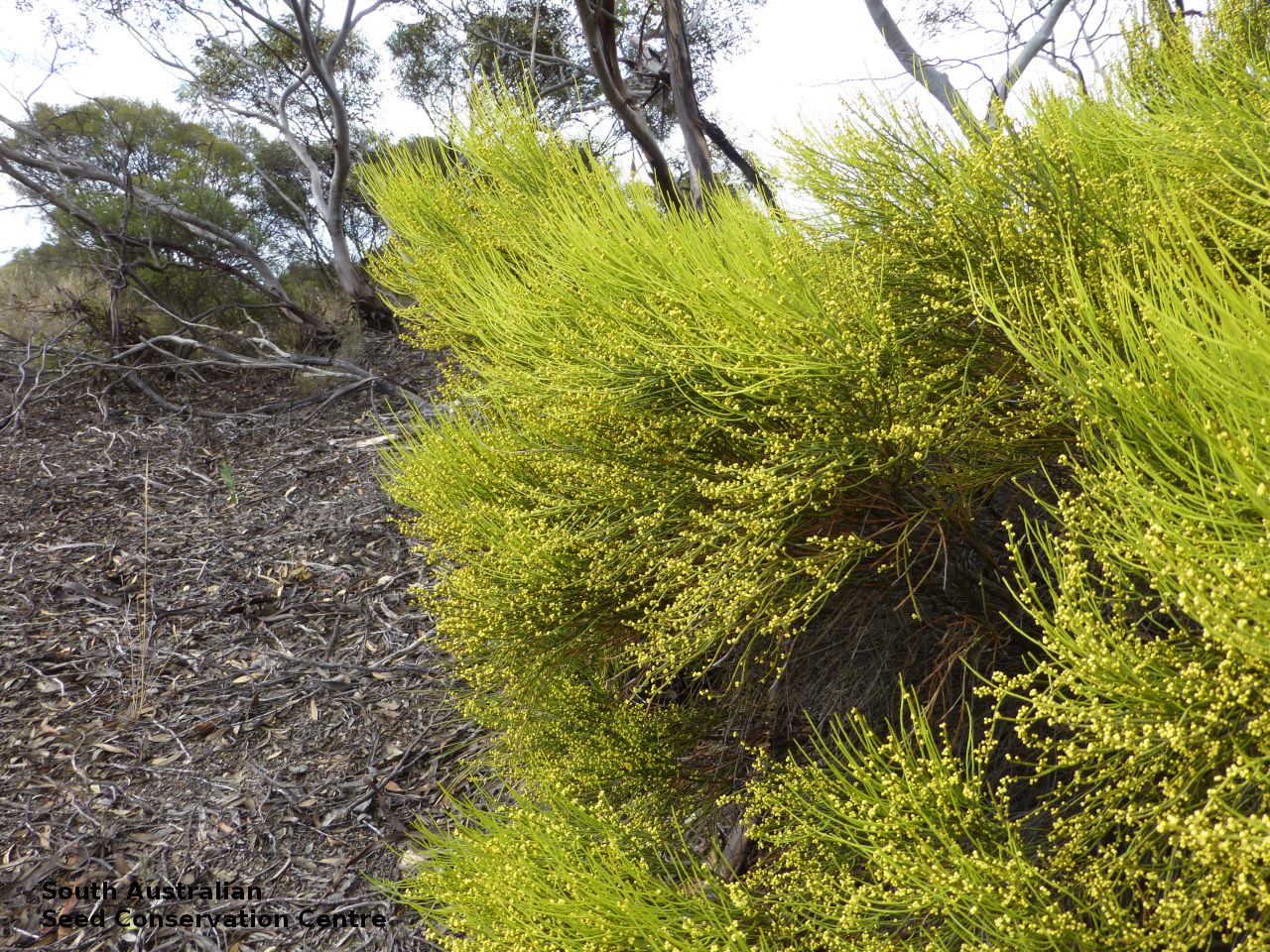
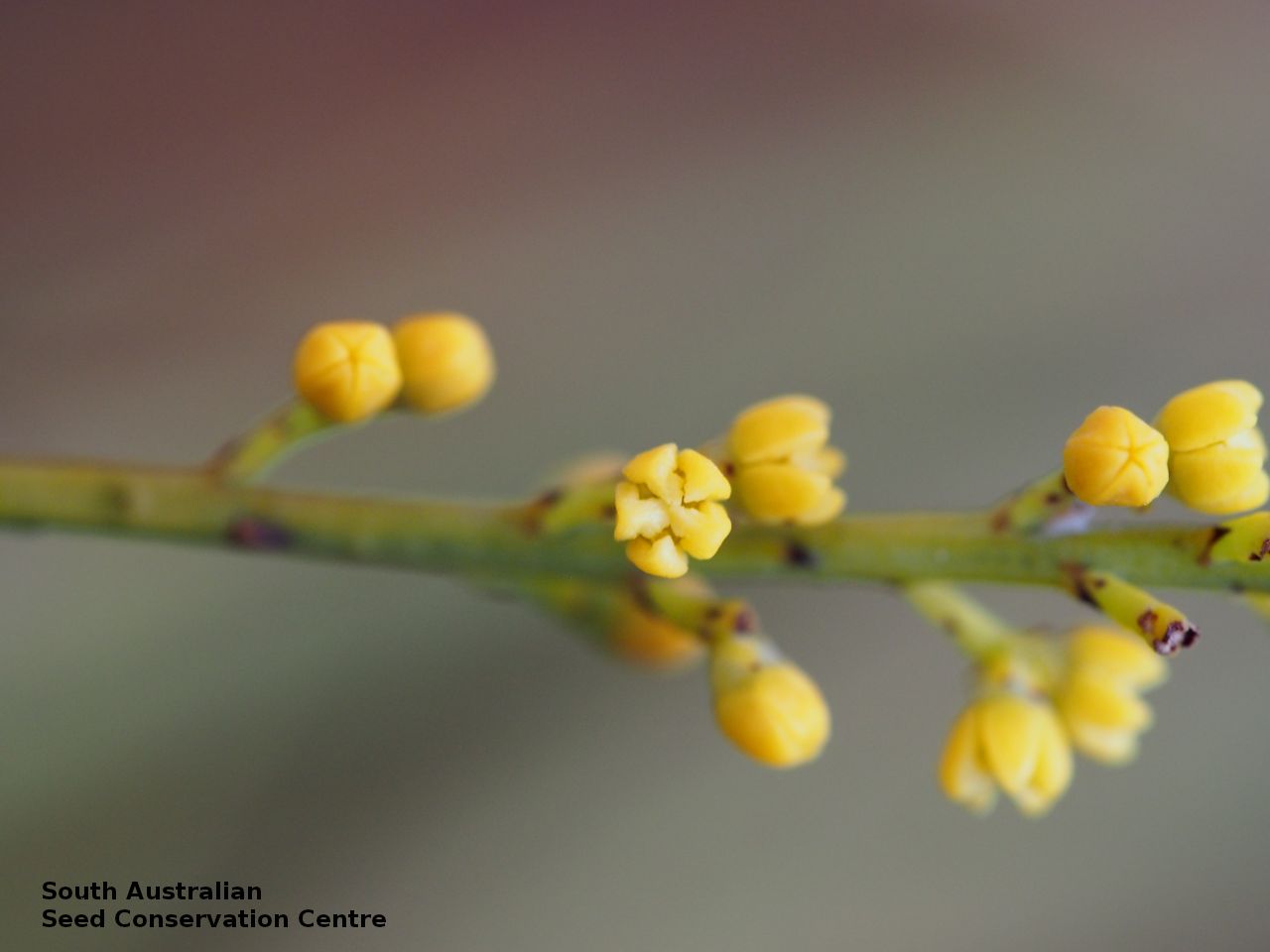
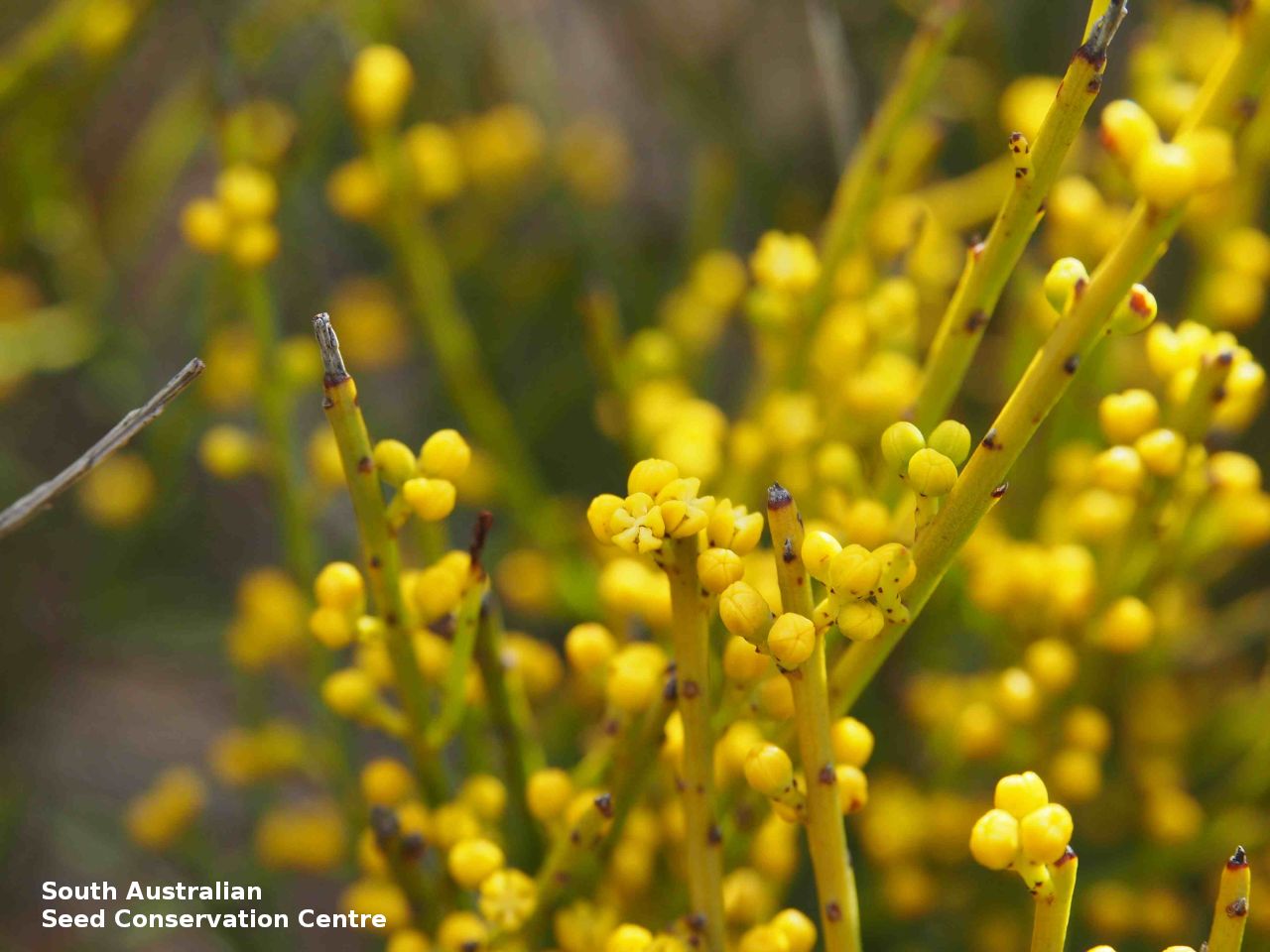
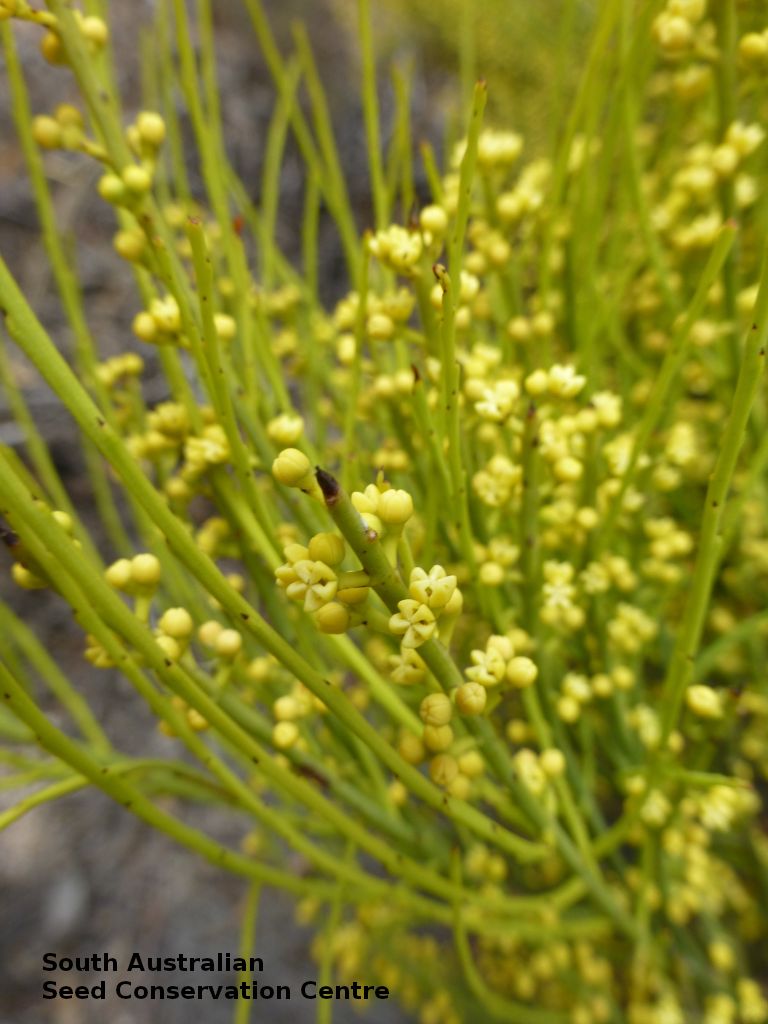
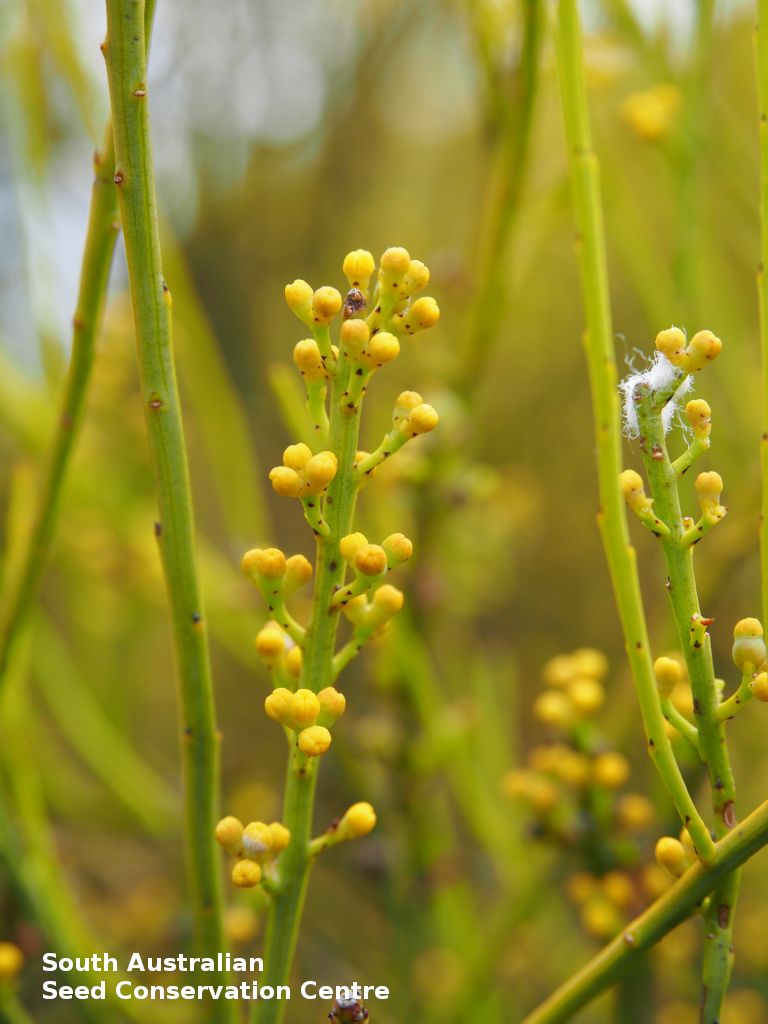
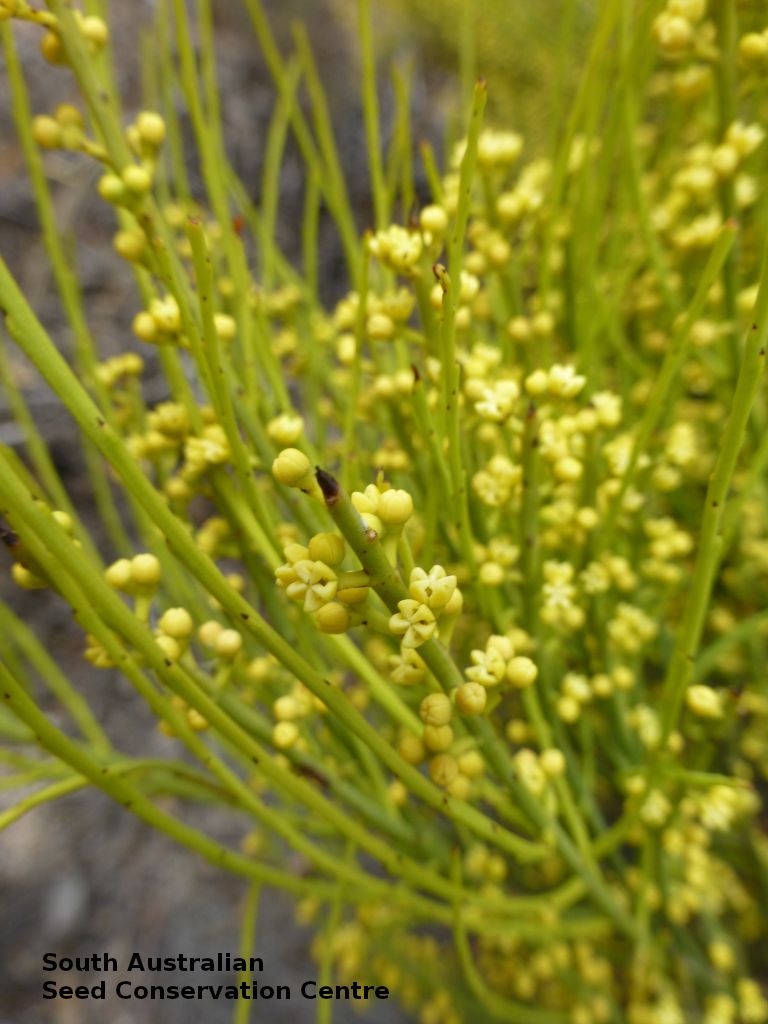
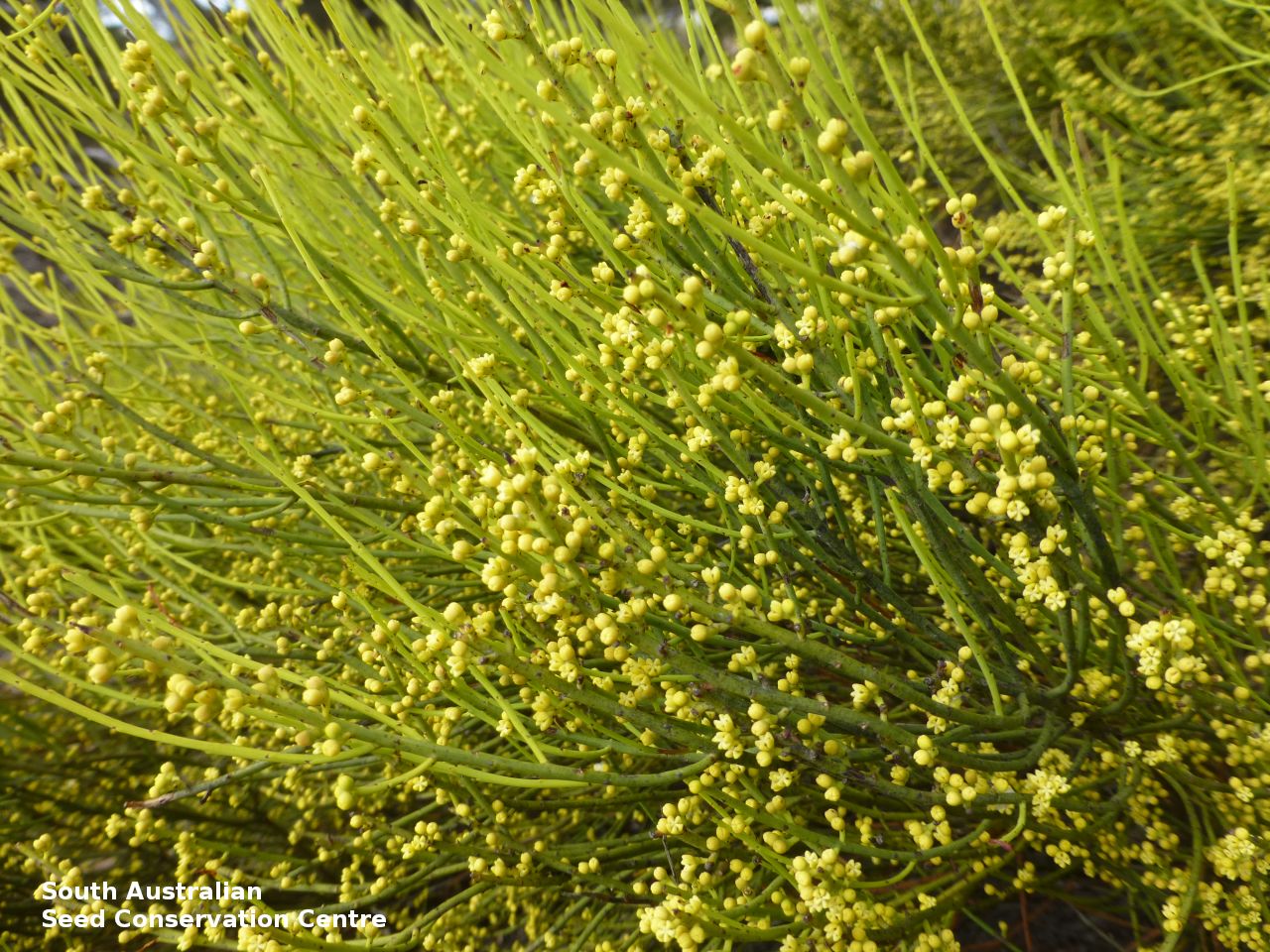
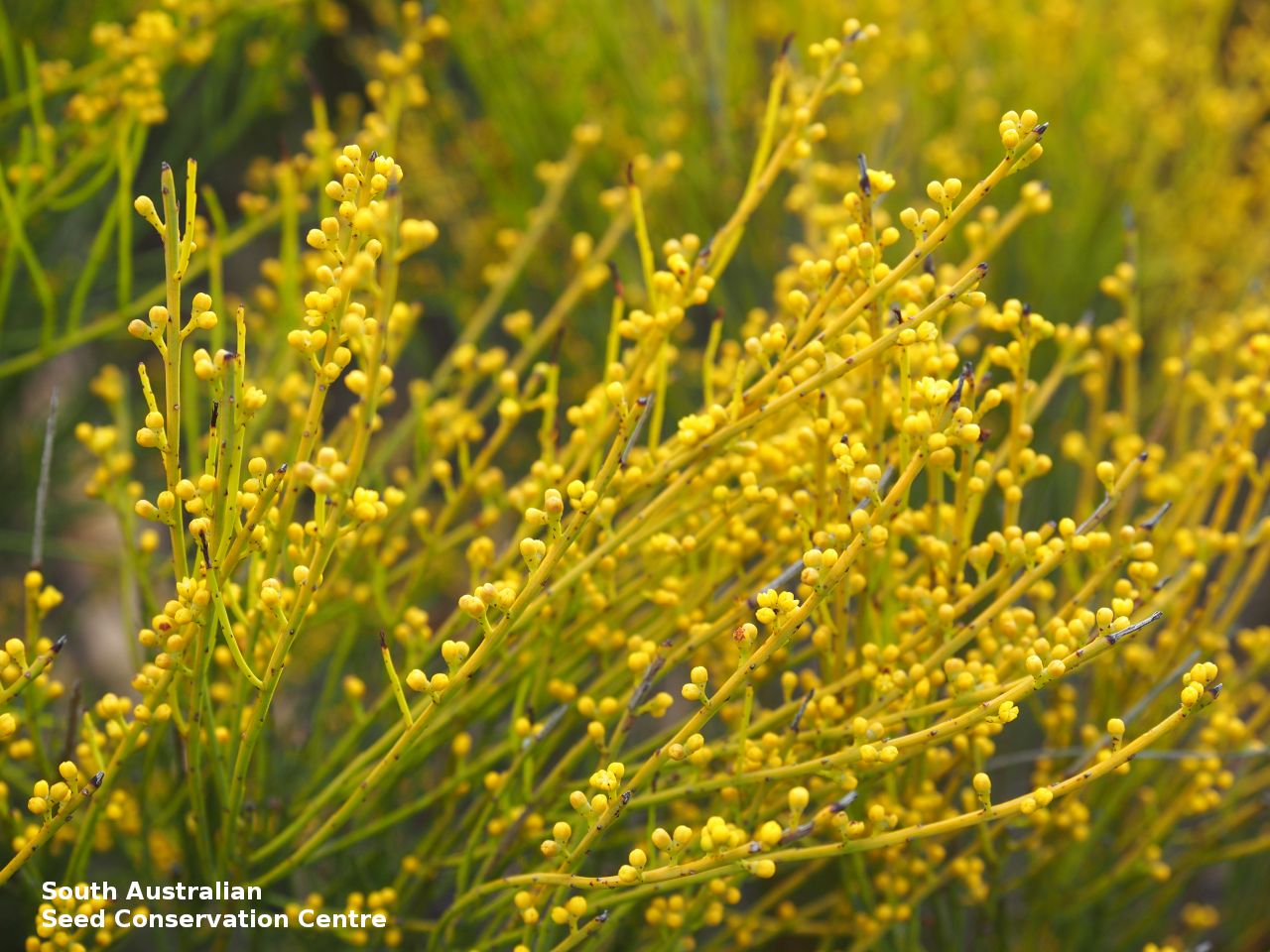
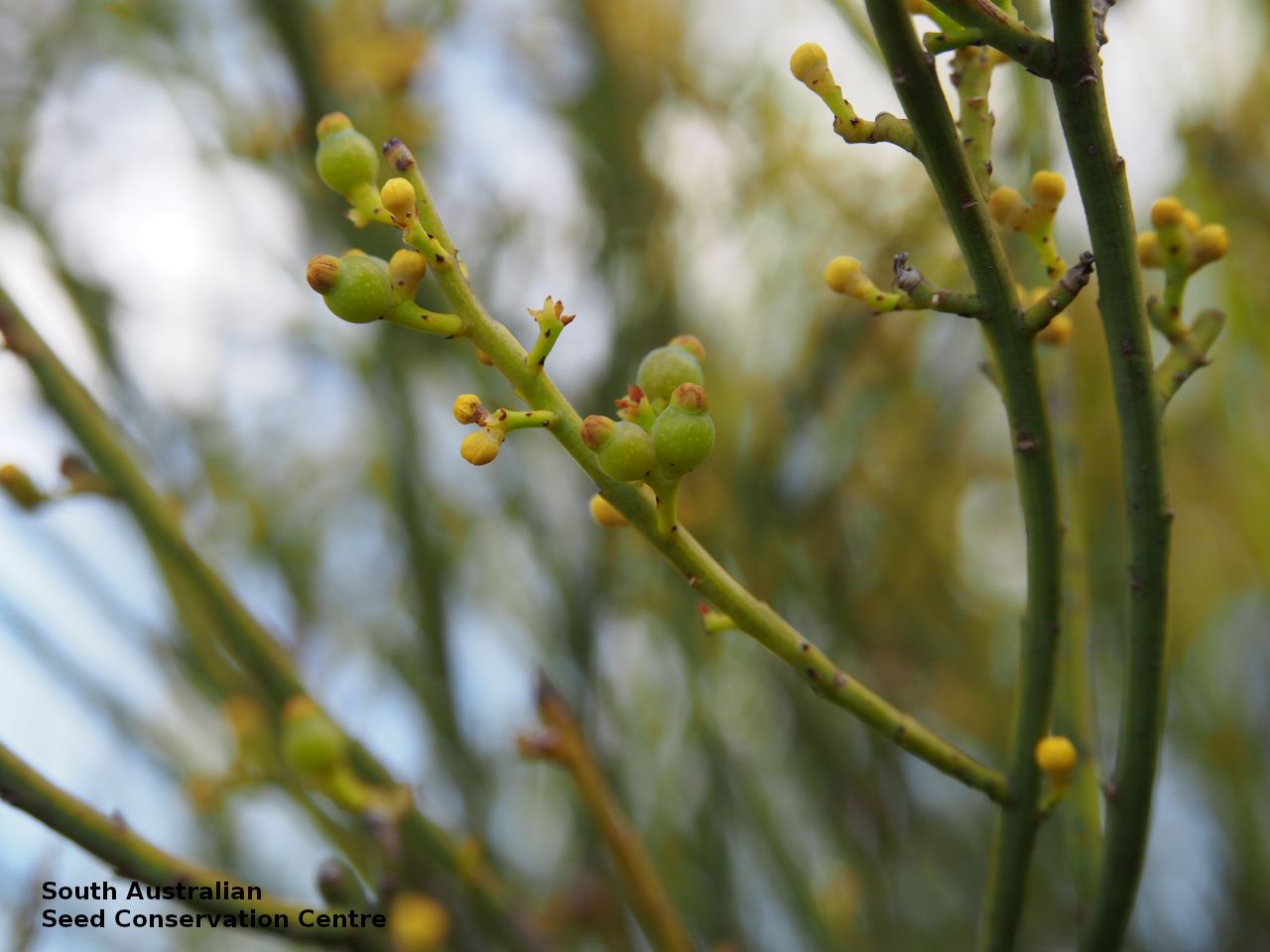
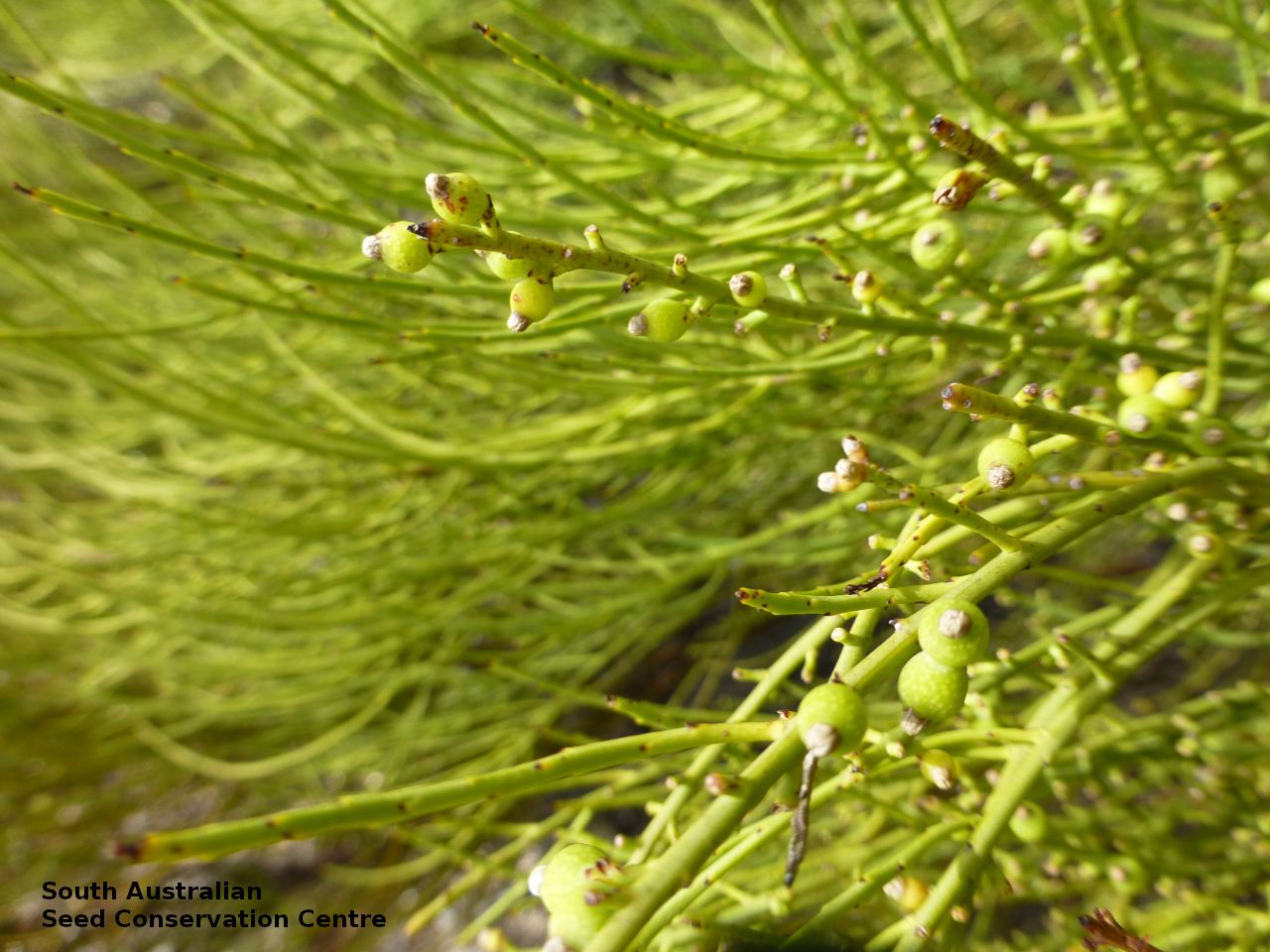
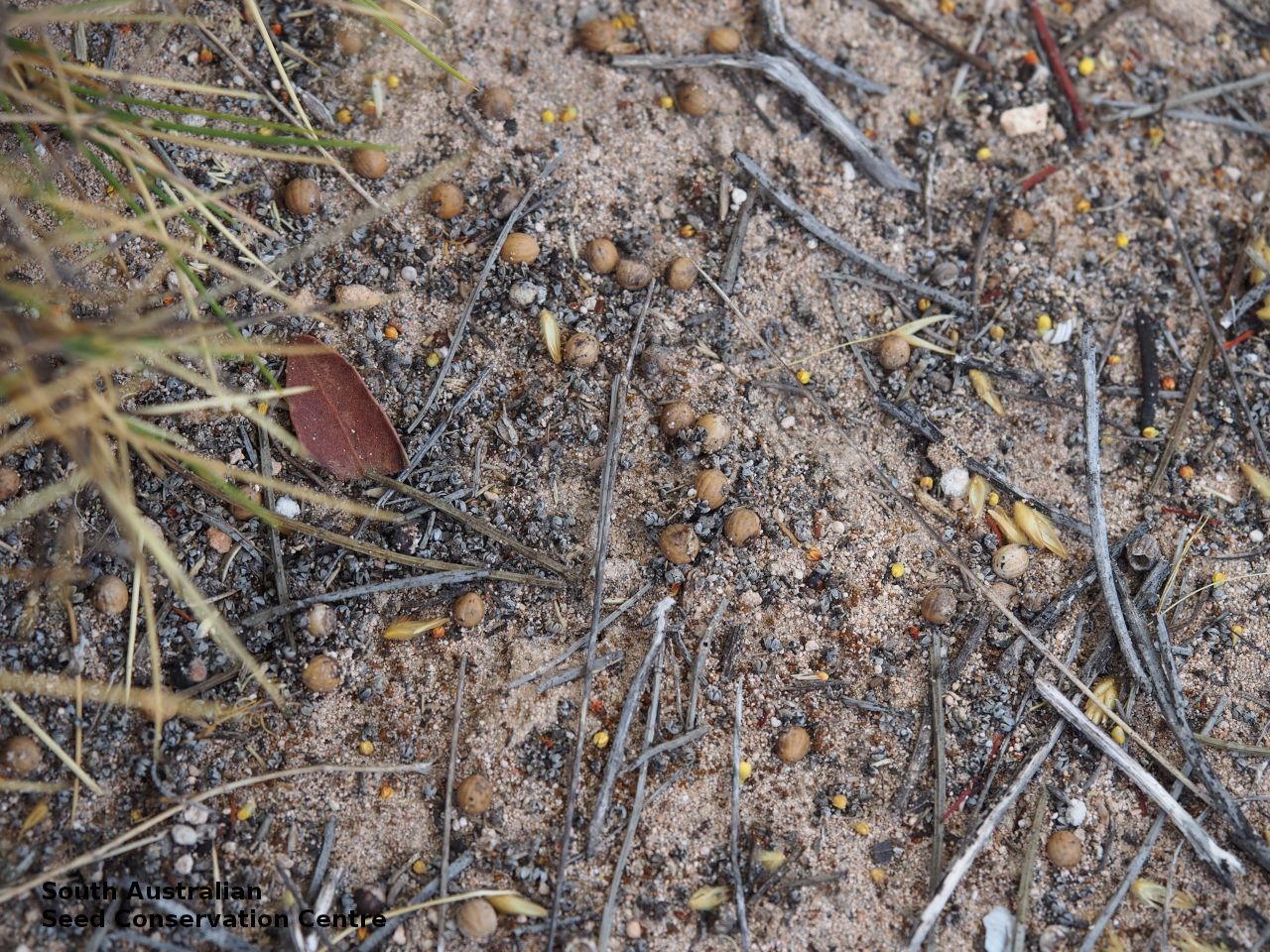
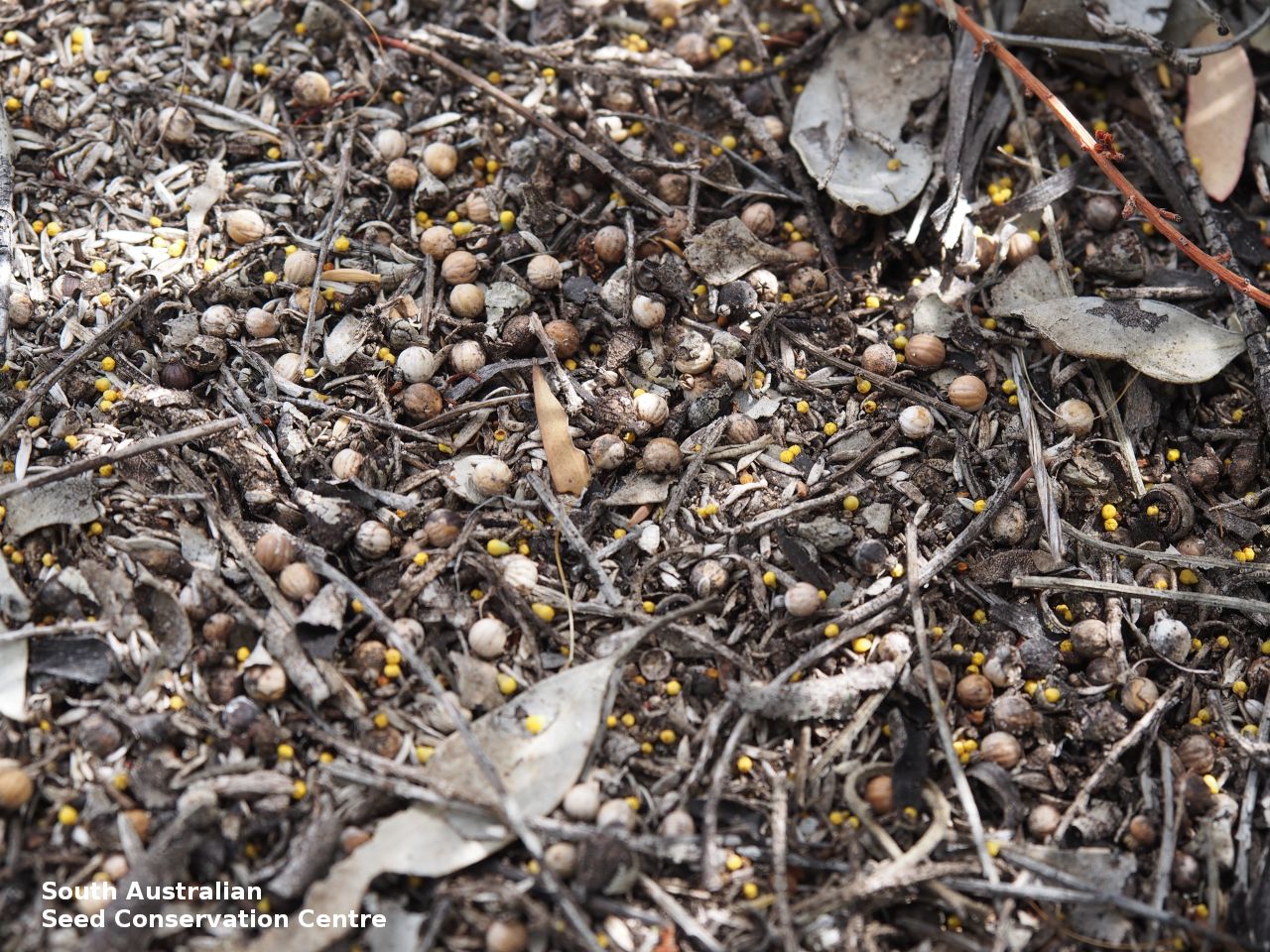
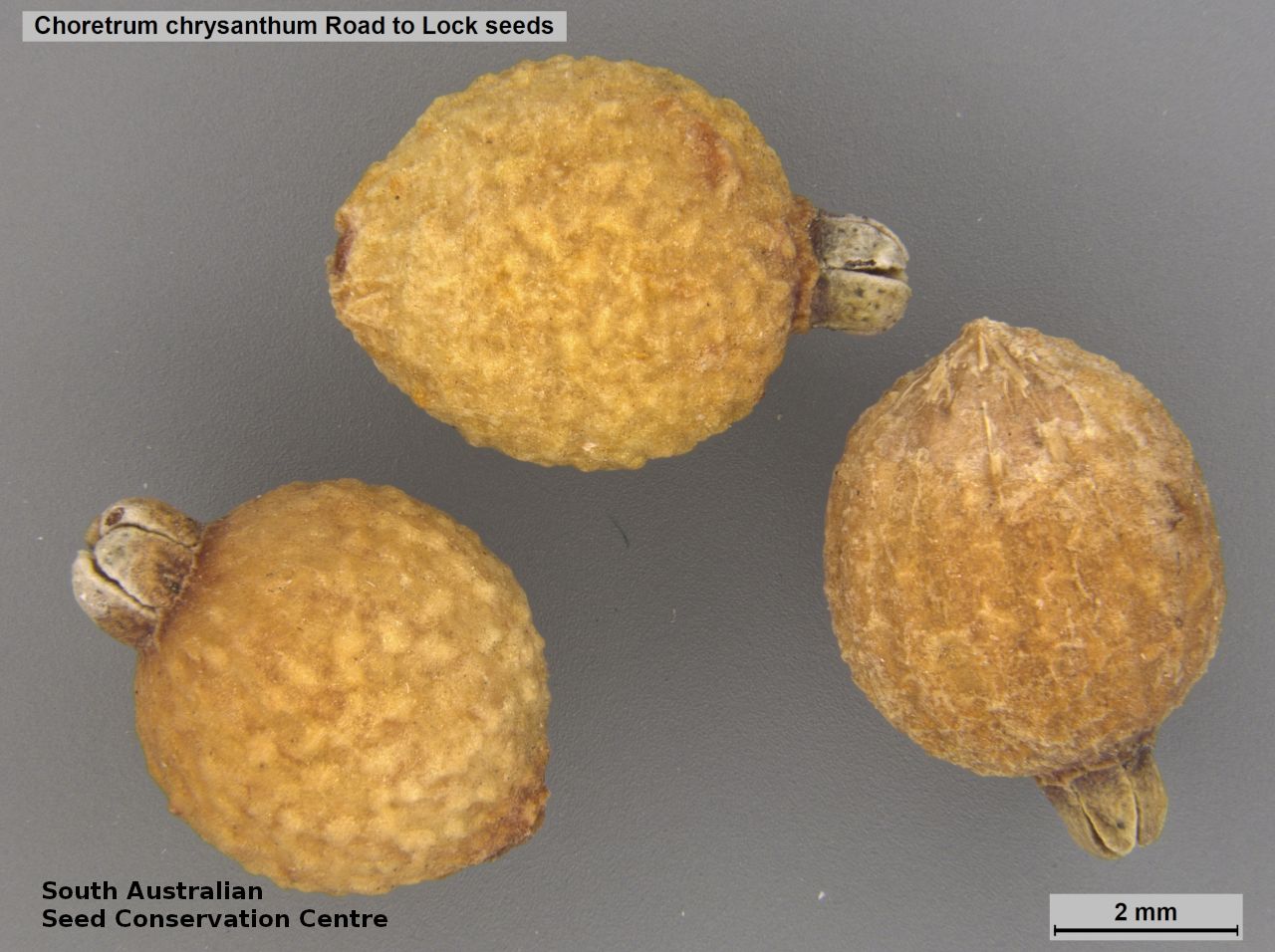
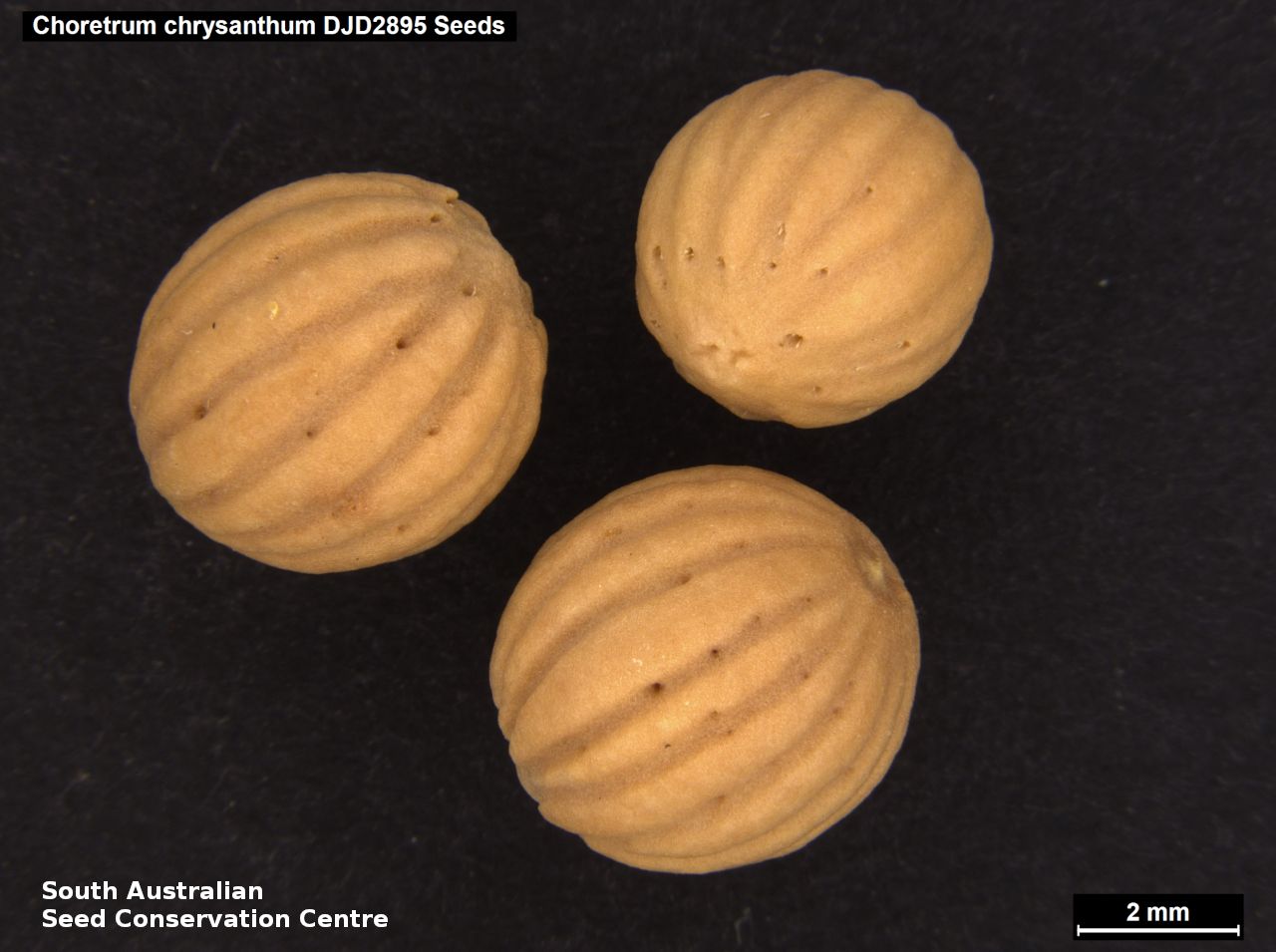

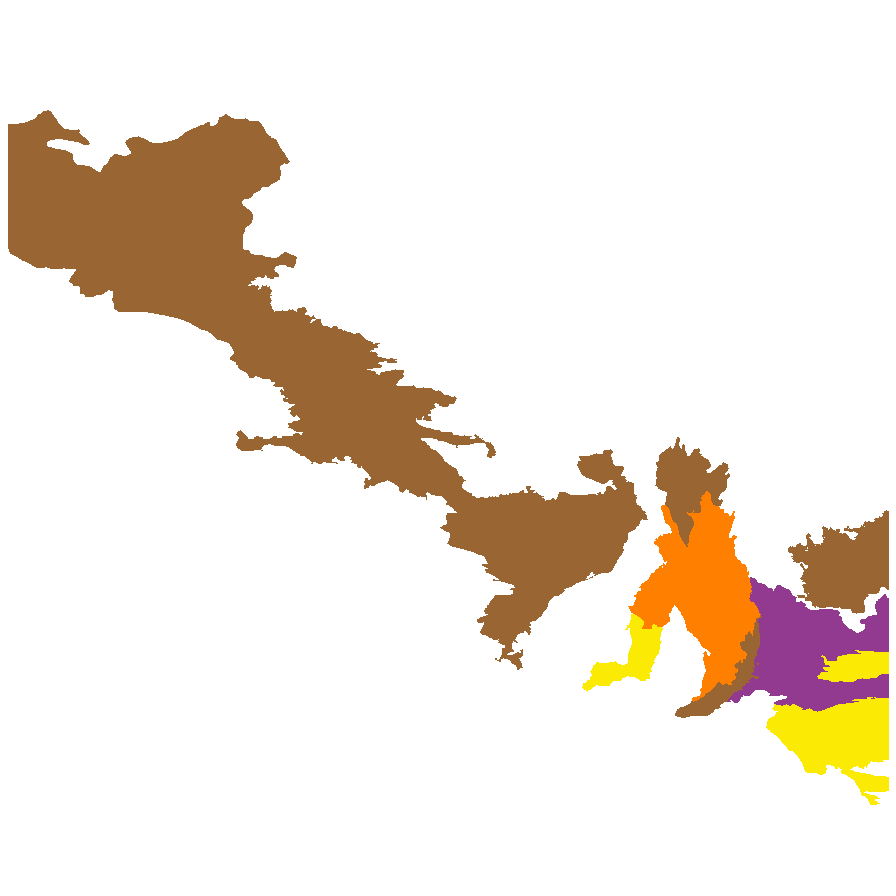
Botanical art
Prior names
Choretrum glomeratum var. chrysanthum
Etymology
Choretrum from the Greek 'choris' meaning separate and 'etron' meaning abdomen, referring to a rim that separates the top of the flower stalk from the flower itself. Chrysanthum from the Greek 'chrysos' meaning golden and 'anthos' meaning flower.
Distribution and status
Found in the southern part of South Australia from the west coast to the lower South-east. Also found in Western Australia and Victoria. Native. Common in South Australia. Rare in Victoria. Uncommon in Western Australia.
Herbarium regions: North Western, Flinders Ranges, Eyre Peninsula, Northern Lofty, Murray, Yorke Peninsula, Southern Lofty, South Eastern
NRM regions: Adelaide and Mount Lofty Ranges, Alinytjara Wilurara, Eyre Peninsula, Northern and Yorke, South Australian Arid Lands, South Australian Murray-Darling Basin, South East
AVH map: SA distribution map (external link)
Plant description
An erect semi-parastic, many-stemmed perennial shrub to 3 m high; branches more or less erect, slender, rigid or flexible, angular or ridged. Leaves narrow-deltoid, triquetrous, to 1.5 mm long, the tips and eventually the whole leaf often caducous (deciduous). Inflorescence yellowish, 1-4 mm long, bearing 2-5 flowers but only 1 fruit. Flowers enclosed at the base by 3 brown or whitish ciliate or fimbriate bracts; perianth yellow (brownish when dry), 1-1.5 mm long. Flowering throughout the year. Fruits are green ovoid or almost globular fleshy drupe to 6 mm long. Seeds are hard brown spherical seeds to 6 mm, with ridges running from end to end. Seed embryo type is linear under-developed.
Seed collection and propagation
Collect seeds between December and April. Collect drupes that are maturing; the skin is softens as it ripens. Either collect the drupes from the bush or the easiest method is to collect ripe fruits that have fallen off the plant from on the ground beneath the bushes. Place the drupes in a bucket of water and rub the flesh off with your hands. Drain the water and wash again if required, to remove all the flesh. Then spread the wet seeds on paper towel and leave to dry. Store the seeds with a desiccant such as dried silica beads or dry rice, in an air tight container in a cool and dry place. Seed viability can be low. Seeds collected off the bushes tend to be less viable than those collected from the ground. This species is generally difficult to germinate, it has morpho-physiological dormancy and complex germination requirements.
| Location | No. of seeds (weight grams) | Number of plants | Date collected | Collection number Collection location | Date stored | % Viability | Storage temperature |
|---|---|---|---|---|---|---|---|
| MSB | 1,500 (88.6 g) | 50 | 27-Sep-2017 | JRG600 Northern Lofty | 68% |
Number of plants: This is the number of plants from which the seeds were collected.
Collection location: The Herbarium of South Australia's region name.
% Viability: Percentage of filled healthy seeds determined by a cut test or x-ray.